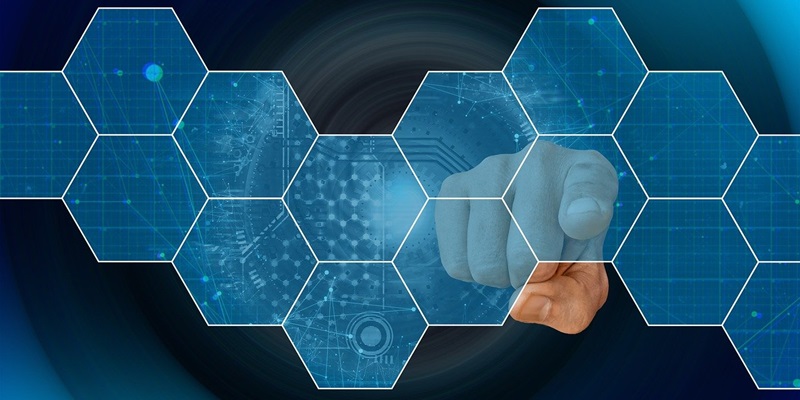Polkadot (DOT) is a next-generation blockchain protocol that aims to revolutionize the way blockchains function and interact with each other. In a rapidly evolving blockchain landscape, Polkadot stands out with its innovative technology and unique features. Its multi-chain network enables interoperability between multiple blockchains, addressing scalability issues, and providing enhanced security. Let’s delve deeper into the intricacies of Polkadot’s architecture and explore how it is reshaping the blockchain ecosystem.
The Unique Technology of Polkadot
Polkadot utilizes a unique technology called the multi-chain network, setting itself apart from other blockchain protocols. Unlike traditional blockchain systems that operate as standalone networks, Polkadot connects various blockchains through its main chain, known as the Relay Chain. This groundbreaking approach enables multiple chains to interact and share data, promoting collaboration and interoperability.
Interoperability Through the Relay Chain
At the core of Polkadot’s multi-chain network is the Relay Chain. It acts as a secure and scalable main chain, connecting different blockchains and facilitating seamless communication between them. By enabling interoperability, Polkadot revolutionizes the way chains operate by fostering collaboration and allowing for the exchange of assets and information.
Addressing Scalability with a Scalable Relay Chain Architecture
Scalability has been a persistent challenge in the blockchain world. Polkadot addresses this issue through its scalable relay chain architecture, which enables the network to process thousands of transactions per second. By utilizing parallel chains, also known as parachains, Polkadot achieves high transaction throughput, ensuring efficiency and scalability within the network.
Modular Architecture for Seamless Upgrades and Improvements
Polkadot’s modular architecture is another standout feature. Its design allows for easy upgrades and improvements without disrupting the network’s functionality. This flexibility enables developers to implement new features or optimize existing ones without the need for hard forks. Consequently, Polkadot can evolve rapidly while maintaining backward compatibility, fostering innovation and adaptability.
Advantages of Using Polkadot (DOT) in Blockchain Infrastructure
Integrating Polkadot (DOT) into a blockchain infrastructure offers numerous benefits. Its interoperability allows for seamless communication between different chains, opening up opportunities for collaboration and expanding possibilities. Moreover, Polkadot’s scalability ensures high transaction throughput, catering to applications with intense transaction demands. Furthermore, Polkadot allows for a customizable governance model, empowering stakeholders to actively participate in decision-making and maintaining a fair and democratic system. Security is also a top priority, as Polkadot employs a shared security model, enhancing protection for all chains within the network. With Polkadot, cross-chain communication and accessibility become inherent features, propelling the efficiency and usability of blockchain applications.
Connecting with Other Networks Through Bridges
Polkadot connects with other networks through its innovative technology called bridges. These bridges act as connectors between external chains and the main Polkadot network. By establishing compatibility between different blockchain systems, Polkadot amplifies its interoperability and expands its reach, fostering a broader ecosystem of interconnected blockchains.
Enhanced Security with the Shared Security Model
Polkadot ensures enhanced security for all chains within the network through its shared security model. This model leverages the collective security of the Relay Chain and parachains, thereby fortifying the network against potential attacks. By pooling security resources, Polkadot establishes a robust environment that protects the integrity of the entire ecosystem.
Polkadot as a Hub for Decentralized Finance (DeFi) Applications
Polkadot’s interoperability and scalability make it an ideal hub for decentralized finance (DeFi) applications. DeFi relies heavily on the seamless exchange of assets and information between various chains. Polkadot’s multi-chain network architecture facilitates this cross-chain interoperability, enabling DeFi applications to thrive. With Polkadot, DeFi protocols can leverage the network’s scalability and security features to enhance their functionality and provide a seamless user experience.
Enabling Cross-chain Token Transfers and Promoting Asset Exchange
One of Polkadot’s key strengths is its ability to connect different blockchains and enable cross-chain token transfers. This feature promotes liquidity and seamless asset exchange across various chains. Whether it’s transferring tokens between DeFi platforms or facilitating cross-chain trading, Polkadot empowers users with the freedom to transact and exchange assets seamlessly, eliminating silos and unlocking new possibilities.
Polkadot’s multi-chain network architecture and unique features position it as a frontrunner in revolutionizing the blockchain landscape. By prioritizing interoperability, scalability, security, and accessibility, Polkadot strikes a delicate balance between innovation and practicality. Its modular architecture ensures future-proof upgrades and improvements without compromising functionality. With Polkadot’s Bridges connecting external chains and the shared security model fortifying the entire ecosystem, it has emerged as an influential player in fostering collaboration and driving blockchain adoption. As Polkadot continues to evolve, it has the potential to reshape industries, empower developers, and unlock new possibilities that will shape the future of decentralized technologies.

